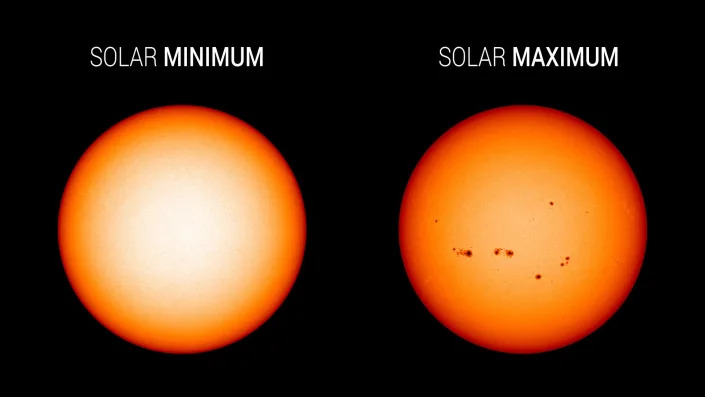The sun's activity could peak 2 years early, frying satellites and causing radio blackouts by the end of this year, experts say
Jessica Orwig,Morgan McFall-Johnsen
Mon, June 26, 2023

A solar plasma "waterfall" was spotted on the sun recently. More odd solar phenomena has been seen recently as the sun nears a peak of activity.Eduardo Schaberger Poupeau
The sun is becoming more active and may reach peak activity sooner than expected.
Solar maximum was predicted to happen in 2025, but sunspot activity has changed that.
An unusual burst of sunspots this year suggests solar maximum could hit by the end of 2023.
The sun is growing more active, which is expected. Our sun has an 11-year cycle where it increases and decreases in activity. What's unexpected is how soon it will reach the solar maximum.
We're currently approaching solar maximum, when the sun reaches peak activity, which experts have previously predicted should happen in 2025.
But the sun's recent behavior suggests solar maximum will hit sooner than expected — by the end of this year.
It's "going to peak earlier and it's going to peak higher than expected," a solar physicist at the University of College London, Alex James, told Live Science.
Why solar maximum is a threat to Earth
The solar maximum is a time when the sun's magnetic field is extremely weak, and that's not great news for Earth.
Normally, the solar magnetic field acts as a shield, constraining solar radiation and reducing the risk of potentially harmful events like solar flares and coronal mass ejections (CMEs).
Solar flares and coronal mass ejections are examples of solar storms. When the storm breaks, it fires high-energy particles into space. On the off chance those particles strike Earth, they can cause a lot of damage.

An animation of the solar wind shows high-energy particles streaming from the sun towards Earth.NASA
For example, already this year a powerful solar flare caused widespread radio blackouts that disrupted high-frequency radio signals in North America, Central America, and South America.
In the past, powerful solar storms have surged the Quebec power grid, causing blackouts that lasted up to eight hours. Solar storms have also been linked to exploding sea mines and destroyed Starlink satellites.
Why experts think solar maximum will hit soon
When the sun's magnetic field is weak, its surface gets a lot more interesting to look at.
For example, the solar surface develops temporary black blemishes called sunspots, which are regions where the magnetic field is especially strong in one area. This chokes the flow of hot fresh gas from the sun's interior to the surface, cooling that region and making it appear black.

Sunspots, like the one shown here are cooler than their surroundings, which is why they appear black. But don't be misled, the typical temperature of a sunspot is 7600 degrees Fahrenheit. NASA Goddard on YouTube
Meanwhile, the powerful magnetism behind the sunspot can brew eruptions.
So as the sun grows more active, and its magnetic fields throb and tangle more wildly, scientists expect more sunspots and more of the solar flares and CMEs that can erupt from them.
Therefore, by monitoring the number and frequency of sunspots, scientists can track the solar cycle and its progress toward maximum activity.
In 2020, a national panel of scientists issued a forecast that the sun's current cycle would reach its maximum in 2025 with a peak of roughly 115 sunspots.

The sun has more sunspots during solar maximum.NASA's Solar Dynamics Observatory/Joy Ng
But ever since then, sunspots have been outstripping those predictions. January saw over 140 sunspots, when no more than 92 were predicted, according to a database of the National Oceanic and Atmospheric Administration. May brought nearly 140 sunspots again.
Solar flares have also been growing more frequent and more powerful year by year. An unexpected "stealth" CME washed over Earth on March 24 and created a historically powerful geomagnetic storm, pushing the aurora borealis as far south as Arizona.
An array of other unusual solar phenomena also point to an early solar maximum: a vortex on the sun's north pole, a plasma "waterfall," a tornado-like twisting prominence, and giant "holes" forming in the sun's outer atmosphere.
No comments:
Post a Comment